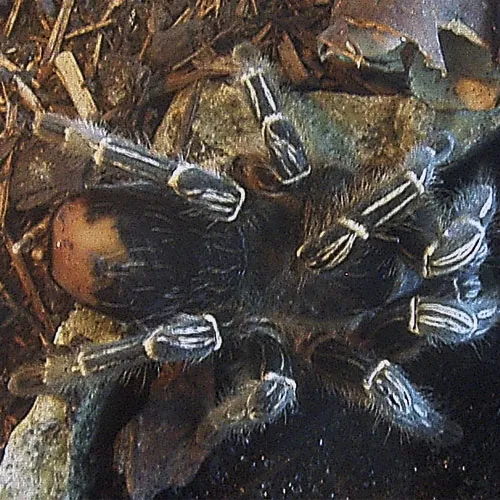Understanding the Striped Knee Tarantula Feeding Habits
Feeding your Striped Knee Tarantula is a critical aspect of its care, influencing its growth, health, and overall well-being. Striped Knee Tarantulas, known for their striking black and white banded legs, are fascinating pets, and understanding their feeding habits is essential for responsible ownership. These tarantulas are opportunistic feeders, meaning they will eat whatever they can catch. However, providing the correct diet and adhering to proper feeding practices ensures your tarantula thrives in captivity. This comprehensive guide will walk you through everything you need to know about Striped Knee Tarantula feeding, from diet and frequency to common mistakes and how to avoid them. Get ready to become a Striped Knee Tarantula feeding expert.
Natural Diet of Striped Knee Tarantulas
In their natural habitat, Striped Knee Tarantulas are primarily insectivores, feeding on a variety of insects and occasionally small vertebrates. Their diet typically consists of crickets, grasshoppers, beetles, and other invertebrates they can overpower. Their powerful fangs and venom allow them to subdue prey much larger than themselves. They also have a very strong appetite, however, their feeding habits and frequency can vary depending on age, size, and environmental factors. Replicating their natural diet as closely as possible in captivity is key to maintaining their health and promoting healthy growth.
Feeding Frequency and Timing
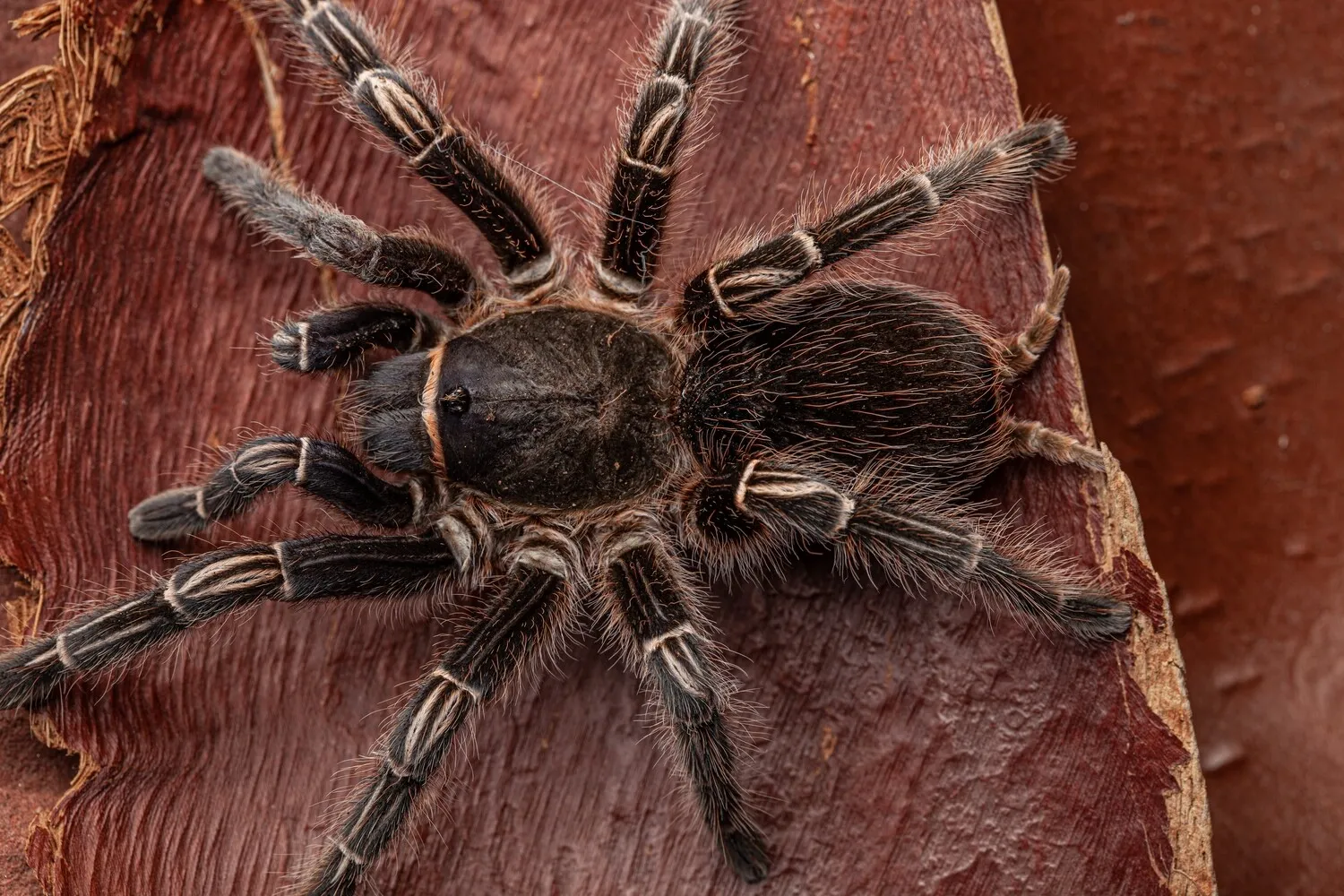
Establishing a feeding routine is vital for the health of your Striped Knee Tarantula. The frequency of feeding should be adjusted based on the tarantula’s life stage. Spiderlings and juvenile tarantulas, those in their early stages of life, require more frequent feeding to support their rapid growth. As they mature, the feeding frequency can be reduced. Always monitor your tarantula’s abdomen size and overall appearance to gauge if it is receiving sufficient food. Overfeeding can be detrimental, leading to health issues. On the other hand, underfeeding can slow down growth and impact the overall health of your pet.
How Often to Feed Striped Knee Tarantulas
Spiderlings (up to 1 inch in leg span) should be fed every other day or every three days. Juvenile tarantulas (1-3 inches in leg span) can be fed once or twice a week. Adult Striped Knee Tarantulas (over 3 inches in leg span) generally need to be fed once every one to two weeks. Adjust this frequency based on your tarantula’s body condition. A well-fed tarantula will have a plump abdomen, indicating that it is receiving enough food. Always remove any uneaten food within 24 hours to prevent mold growth and maintain a clean enclosure. Consistent monitoring is the key to determining the right feeding schedule for your pet.
Best Times to Feed
Striped Knee Tarantulas are nocturnal creatures, meaning they are most active during the evening and nighttime. Therefore, the best time to feed them is in the evening or at night. This aligns with their natural feeding instincts and increases the likelihood of successful feeding. Ensure the enclosure is well-lit when feeding, but avoid direct sunlight. Always make sure the tarantula has access to fresh water before and after feeding. Also, take into account the temperature of their enclosure. If the temperature is too low, they may refuse to eat, whereas a suitable temperature will make them more willing to feed.
Choosing the Right Food for Your Striped Knee Tarantula
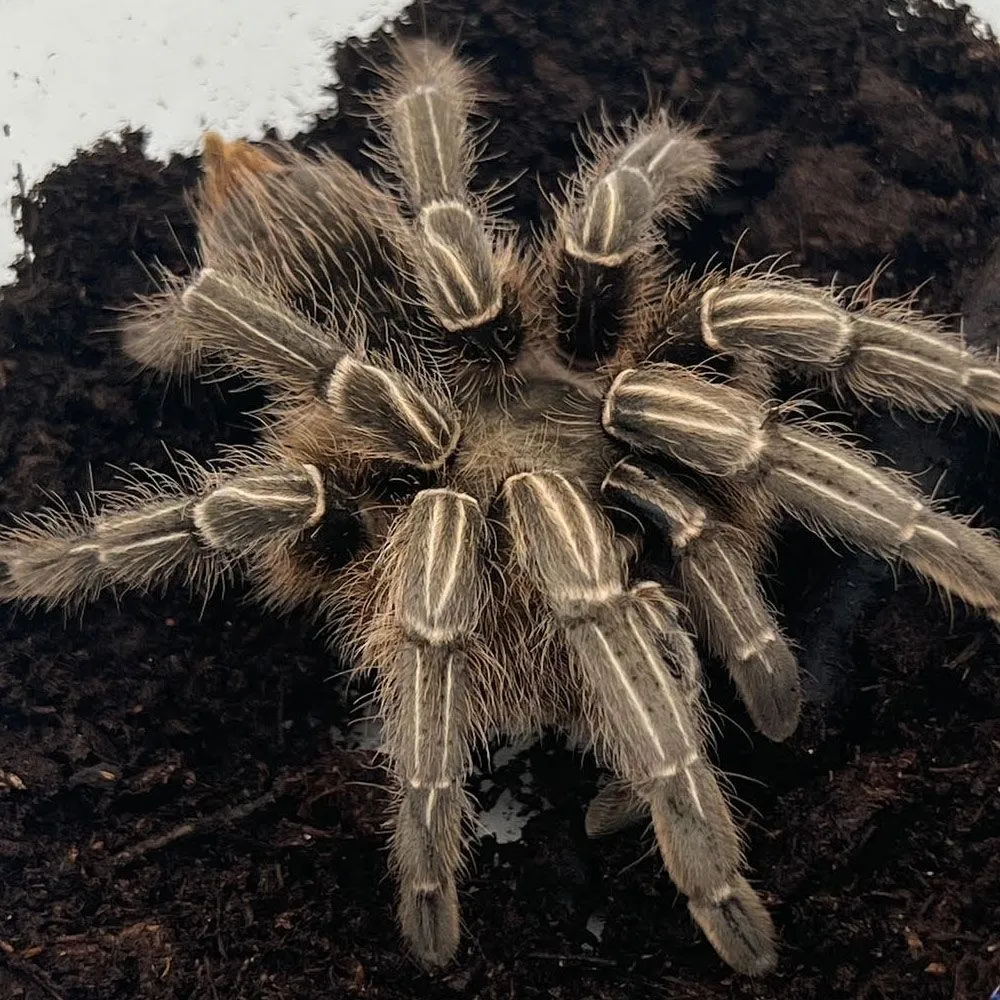
Selecting the appropriate food items is crucial for the health and longevity of your Striped Knee Tarantula. The diet should primarily consist of live insects, mimicking their natural feeding habits. Variety in their diet ensures they receive a range of nutrients. Be mindful of the size of the prey in relation to your tarantula’s size, as appropriately sized food can help prevent choking and make the feeding process easier. Ensure that all food items are healthy and free from pesticides or parasites, to keep your tarantula safe. Regular monitoring of your tarantula’s feeding responses will enable you to make adjustments as needed.
Live Insects as Staple Diet
Live insects should form the core of your Striped Knee Tarantula’s diet. This satisfies their predatory instincts and provides essential nutrients. Crickets are a popular choice, readily available and relatively easy to manage. Roaches, such as dubia roaches, are also excellent options, offering a higher nutritional content and being less prone to escape. Mealworms can be used as a supplemental food source, but they should not be the sole diet because of their lower nutritional value and high chitin content. Remember, always ensure the insects you offer are healthy and gut-loaded (fed nutritious food before being offered to the tarantula) to provide maximum nutritional benefit.
Suitable Insect Varieties
Crickets are a standard choice for feeding tarantulas, providing a good source of protein and being easy to find. Dubia roaches are an excellent alternative; they are nutritious and can be easily bred. Mealworms are a supplement, but should not be the primary diet; they can be offered in moderation. Locusts and grasshoppers are also suitable, especially for larger tarantulas. Always vary the insect types to ensure a balanced diet. Before feeding, gut-load the insects with nutritious food (such as vegetables and grains) to enrich their nutritional value, which will then be passed onto your tarantula. Select insects that are free from pesticides to keep your pet safe.
Size Matters Choosing Correct Insect Size
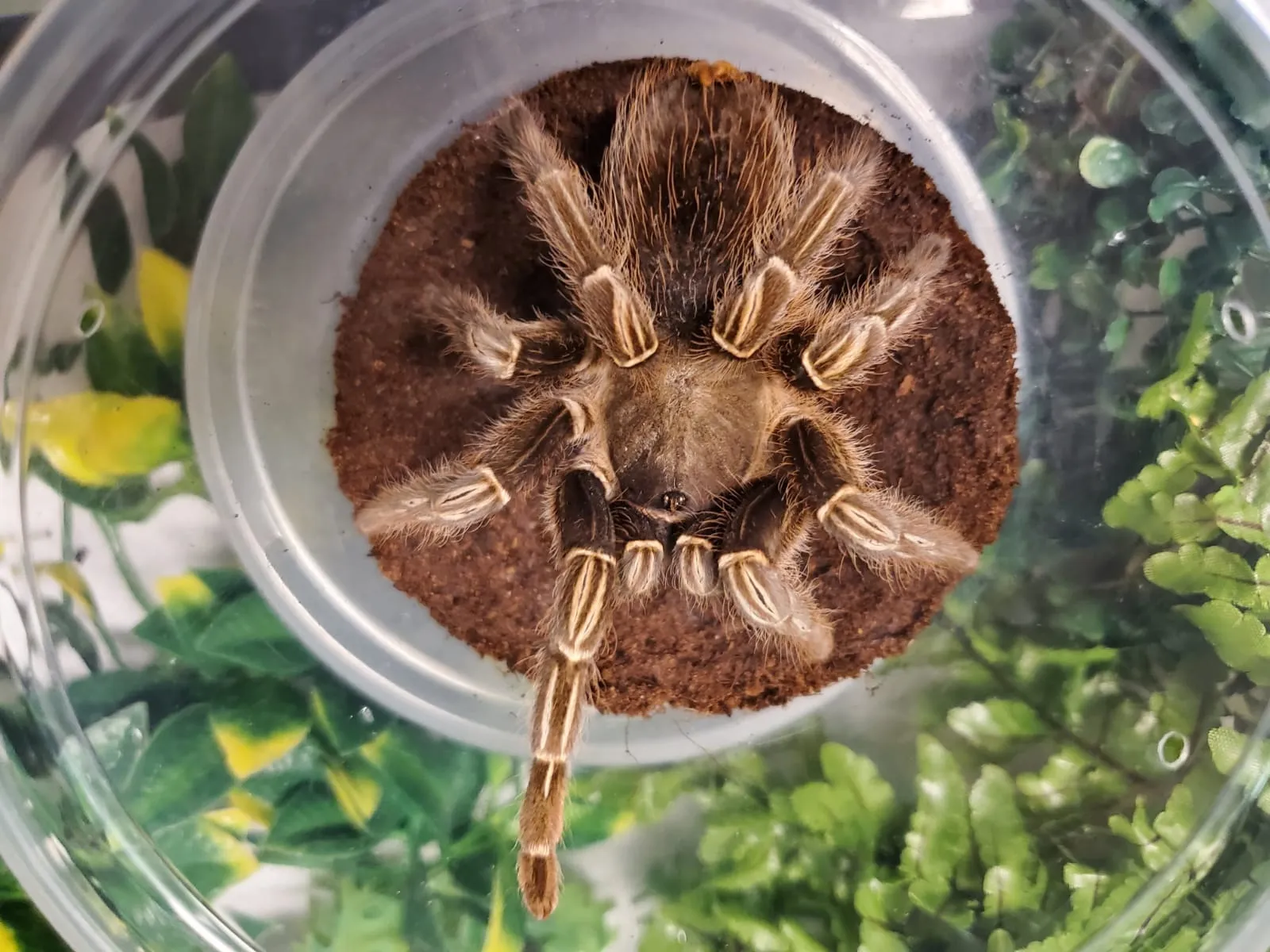
The size of the prey is critical. The general rule is to offer insects no larger than the tarantula’s body length, excluding the legs. For spiderlings, small pinhead crickets or fruit flies are appropriate. Juvenile tarantulas can handle slightly larger crickets and roaches. Adults can consume adult-sized insects. Providing prey that is too large can be dangerous, as the tarantula may struggle to subdue or eat it, which can lead to stress or injury. Always observe your tarantula’s feeding behavior to ensure the insect is manageable. A tarantula that consistently rejects food may be overwhelmed by its size, so adjust accordingly.
Supplementing with Other Food Items
While live insects are the primary food source, supplementing with other food items can add variety and enhance the nutritional profile of the diet. Occasional offerings of pre-killed insects, such as crickets or roaches, can be beneficial, particularly for tarantulas that are reluctant feeders. Small pieces of cooked chicken or other lean meats (ensure they are unseasoned) can be offered sparingly, but these should not form a regular part of the diet. It is also possible to offer vitamin-enriched food to your tarantula. However, these additional items should be provided in moderation and as supplements to the main diet of live insects.
Pre-killed Food and Its Importance
Pre-killed food offers a safer alternative to live insects, especially for tarantulas that may be struggling to hunt or are in the process of molting. This option helps to minimize the risk of injury to the tarantula from the prey, particularly during molting, when they are more vulnerable. Pre-killed insects should be fresh and offered promptly to avoid spoilage. Ensure that the pre-killed insects are the correct size and match the types of live insects they are used to. They may need to be moved around a bit to stimulate the hunting response. Pre-killed food can be a useful tool in maintaining your tarantula’s feeding schedule, especially when dealing with a tarantula that is not eating well.
Proper Feeding Techniques for Striped Knee Tarantulas
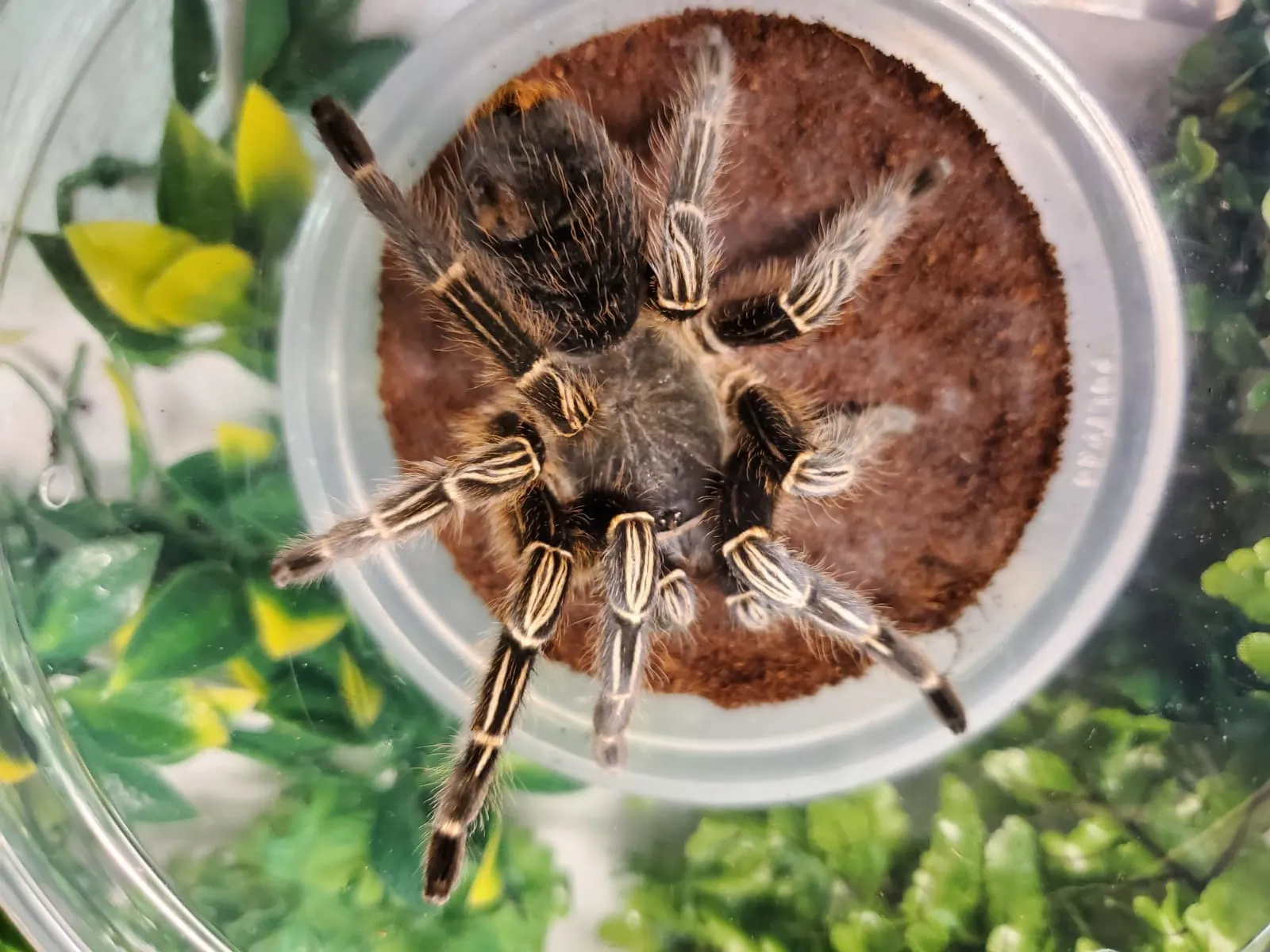
The method of feeding your Striped Knee Tarantula can significantly impact its feeding experience and overall well-being. Proper techniques involve careful preparation, safe presentation of food, and diligent monitoring of your tarantula’s behavior during feeding. These practices help to ensure that the tarantula eats safely, minimizes stress, and maintains a healthy appetite. Paying close attention to details such as the feeding area and how you offer the food can lead to a positive feeding experience for your pet. Practicing safe and effective feeding techniques is an important step in providing a high quality of life for your Striped Knee Tarantula.
Preparing the Feeding Area
Before feeding, make sure the tarantula’s enclosure is clean and in good condition. Remove any uneaten food from previous feedings to avoid attracting mites or other pests. Ensure the enclosure is at the correct temperature and humidity levels, as these factors can impact the tarantula’s appetite. Provide a clean water source; a shallow water dish is recommended. When feeding, place the prey directly into the enclosure. Avoid feeding the tarantula by hand to prevent accidental bites. If you use a feeding tong, approach the tarantula with care, ensuring that the insects are placed within its striking range.
Offering Food Safely
To offer food safely, use a pair of long feeding tongs to present live insects to the tarantula. This minimizes the risk of being bitten. Place the insect near the tarantula, allowing it to approach and capture the prey naturally. Avoid startling the tarantula, as this can cause it to retreat or become defensive. If the tarantula does not immediately take the prey, leave the insect in the enclosure and observe. If the insect remains uneaten for more than 24 hours, remove it from the enclosure. Always wash your hands thoroughly after handling insects or working in the tarantula’s enclosure. By being patient and cautious, you can ensure a safe feeding process.
Monitoring Food Intake
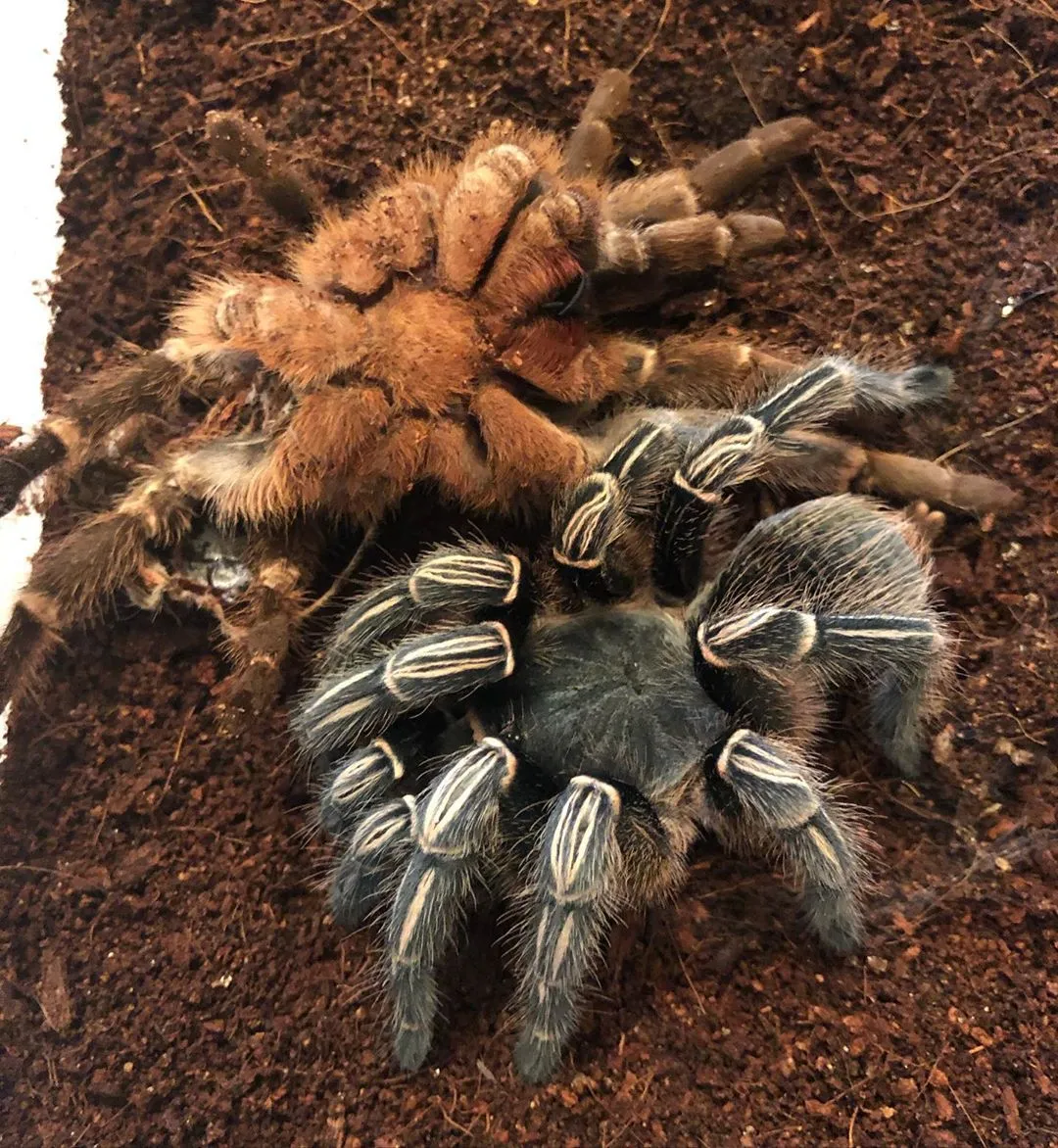
Carefully monitor your Striped Knee Tarantula’s feeding behavior. Note whether the tarantula readily accepts the food and how it consumes its prey. Observe the tarantula’s body condition; a plump abdomen indicates it is well-fed. Keep track of the feeding frequency and the amount of food consumed to help identify any changes in appetite. If the tarantula consistently refuses to eat, investigate potential causes, such as stress, molting, or improper environmental conditions. Record any changes in feeding habits to identify trends and adjust your care routine as needed. Regular monitoring is important for ensuring your tarantula’s health.
Dealing with Uneaten Food
Uneaten food can pose health risks to your tarantula. Remove any uneaten insects from the enclosure within 24 hours of feeding. This helps to prevent the insects from bothering the tarantula and reduces the risk of mold growth, which can be harmful. Use tongs or a small container to remove the uneaten insects. Inspect the enclosure regularly and promptly remove any insect remains. If your tarantula repeatedly refuses food, consider adjusting the feeding schedule, the size of the prey, or the type of food offered. Be sure to address any underlying issues that may be affecting the tarantula’s appetite. Dealing with uneaten food is part of maintaining a healthy and safe habitat for your pet.
Important Considerations in Striped Knee Tarantula Feeding
Several factors can impact the Striped Knee Tarantula’s feeding behavior and overall health. Maintaining proper hydration and appropriate temperature and humidity levels is important. Also, be aware of the reasons your tarantula might refuse food, such as molting or stress. By understanding these considerations, you can provide the best possible care for your pet. These factors will greatly improve your tarantula’s quality of life. A proactive approach to tarantula care will help to ensure that your pet thrives.
Hydration and Water
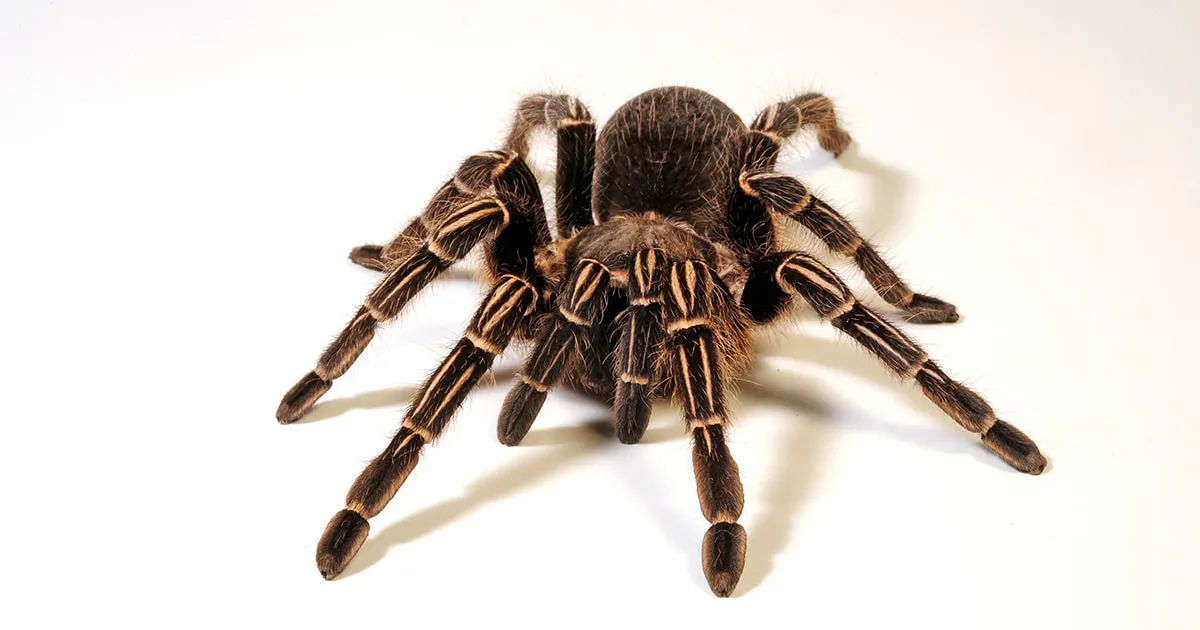
Proper hydration is critical for the health of your Striped Knee Tarantula. Always provide a shallow water dish filled with fresh, clean water. The dish should be small enough that the tarantula cannot fall in and drown, and should be placed away from the heat source. Refill the water dish regularly, ideally every day or every other day, to ensure the water remains clean. For spiderlings, a damp cotton ball can be used as a water source to prevent the risk of drowning. Make sure the humidity level in the enclosure is appropriate. Hydration is important for promoting the tarantula’s overall well-being, assisting in molting and maintaining healthy bodily functions.
Temperature and Its Effect on Appetite
The temperature of the enclosure significantly impacts your Striped Knee Tarantula’s appetite. Tarantulas thrive in a temperature range between 75-85°F (24-29°C). Temperatures that are too low can slow down the tarantula’s metabolism, leading to a reduced appetite. In contrast, higher temperatures can increase the tarantula’s metabolic rate. Monitoring the enclosure’s temperature using a thermometer is important. Ensure the enclosure is not placed in direct sunlight or near a drafty area, as both can affect the temperature. Providing a consistent temperature range is key to encouraging regular feeding and maintaining the tarantula’s health.
Recognizing and Addressing Refusal to Eat
A Striped Knee Tarantula may refuse to eat for several reasons. One common reason is that it is approaching or undergoing a molt. During molting, tarantulas typically stop eating. Other potential causes include stress, illness, or environmental issues such as incorrect temperature or humidity levels. Observe your tarantula’s behavior and appearance. If the tarantula refuses food for an extended period, look for other signs of illness, such as lethargy or changes in posture. If you suspect illness or stress, consult with a veterinarian or an experienced tarantula keeper. Addressing the underlying cause is crucial for restoring the tarantula’s appetite and overall health.
Common Feeding Mistakes to Avoid
Avoiding common feeding mistakes is key to successful tarantula care. Overfeeding, providing the wrong food, and improper enclosure maintenance are all issues that can negatively affect your Striped Knee Tarantula’s health. By being mindful of these potential problems and adhering to best practices, you can ensure a long and healthy life for your pet. Knowing the common errors to avoid will go a long way in ensuring that your tarantula thrives.
Some of the most common mistakes when feeding Striped Knee Tarantulas include overfeeding, offering prey that is too large, and offering inappropriate food. Always provide the correct size and type of food, and do not overfeed your pet. Always provide a fresh water source. Proper care involves creating a proper environment and feeding regimen that supports the tarantula’s needs.
In conclusion, feeding a Striped Knee Tarantula requires a good understanding of its natural behaviors, dietary needs, and environmental requirements. By adhering to the guidelines outlined in this guide, you can create the perfect feeding plan for your pet tarantula, providing optimal health, growth, and overall happiness. Remember that consistent monitoring, observation, and adaptation are essential for successful tarantula keeping. Enjoy the journey of owning this fantastic pet!
